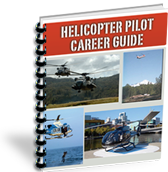U.S. Army Helicopter Pilot Careers
Army helicopter pilots begin their training at the birthplace of Army Aviation located at Fort. Rucker Alabama. The Army knows a thing or two about operating helicopters. It has the largest number of helicopters of any US military service. Training at Fort Rucker begins with learning the basic stick and rudder skills and advances to learning advance techniques that teach you how to employ the helicopter as a weapons systems. Once you’ve completed your training at Ft. Rucker (pilots are always training) the real fun begins. Army aviators fly some of the most advanced helicopters in the world.
The U.S. Army's big stick is the AH-64D Apache Longbow attack helicopter. Apache pilots are able to operate day or night in almost any weather condition. The Apache can carry a variety of weapons that include rockets, and missiles in addition to its own 30mm chain gun.
The Apache pilots have the distinction of flying one of the most advanced helicopters in the entire U.S. inventory. The Apache uses advanced avionics that improve survivability, effectiveness, and situational awareness for its crew. In addition, the two Apache pilots are protected by a titanium tub that is integrated into the cockpit. The tub provides protection from rounds as large as 23mm. The Apache has a crew of two pilots, a maximum speed of 180 mph and a combat radius of 270 n.m.
If the Apache is the big stick than the OH-58 is the arrow. The OH-58 Kiowa Warrior is a scout, observation, and light attack helicopter. The job of OH-58 Kiowa pilots is to locate enemy positions and call in fire from other units such as artillery, naval gunfire, tactical aircraft or AH-64 gunships. The Kiowa also has the ability to engage targets. It can carry rockets, missiles, and gun pods. The Kiowa has a crew of two pilots and can carry two additional people in the rear seats. It has a maximum speed of 140 mph and a combat range of 170 miles.
The AH-1F Cobra is another attack helicopter flown by Army pilots but ut is a generation older than the Ah-64. The Ah-1F is a tandem seat attack helicopter and is used in much the same way as the AH-64 Apache. It can carry rockets and missiles in addition to its 3-barreled 20mm gatling gun. It has a crew of two pilots and a combat radius of 150 mi.
The UH-60 Black Hawk is a medium lift assault/utility helicopter. Black Hawk pilots do it all. They can carry troops and equipment and act as an airborne command posts. The Black Hawk is able to carry 11 fully armed combat troops. It also has the ability to lift the 105mm M102 Howitzer along with its 4-person crew and reposition it. The Black Hawk crew consists of two pilots, a crew chief, and a gunner. The Black Hawk has a maximum speed of 200 mph and a combat radius of 370 mi.
Army pilots who fly the CH-47 Chinook have the distinction of flying the Army’s heavy lift helicopter. The two Chinook is powered by two engines and its rotors are arranged in tandem (one behind the other). The tandem design does not require a tail rotor because each main rotor spins in the opposite direction effectively canceling out the torque produced. Army CH-47 pilots fly a number of missions such as troop movement, re-supply, and artillery placement. To help in loading and unloading supplies the Chinook has a large loading ramp in the rear of the fuselage. It also has three external hooks from which it can sling loads. The CH-47 has a crew of three, two pilots and a crew chief. It can carry 33 troops or 24 litters and three medical personnel or 28000 pounds of cargo. The Chinook has a maximum speed of almost 200 mph and a combat radius of 650 miles.
The MH-6 and AH-6 LOACH were originally variants of the OH-6 but know they are a separate platform based on the McDonnell Douglas model 530. The MH-6 and AH-6 are special operation helicopters. Army helicopter pilots who want a chance to fly these two birds must apply to and be accepted by the 160th Aviation Regiment better known as the Night Stalkers. The Night Stalkers are a special operations aviation unit that specializes in inserting, extracting, re-supplying, and supporting special operations teams and missions around the world.
Army helicopter pilots have a long and proud tradition of operating helicopters. They are very skilled and serve the nation with honor and distinction.
Get our free guide and take a look at the numerous career opportunities available in commercial/government helicopter aviation.
Just fill out your name and e-mail address in the boxes below.